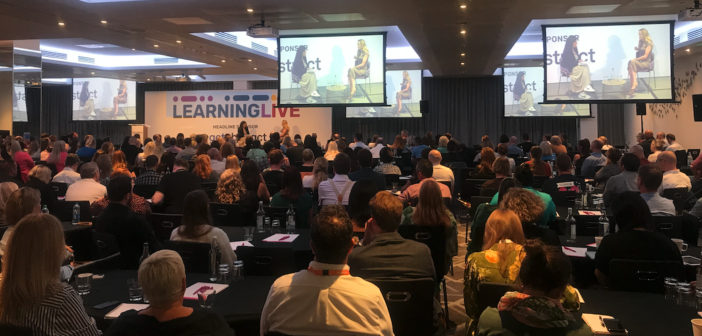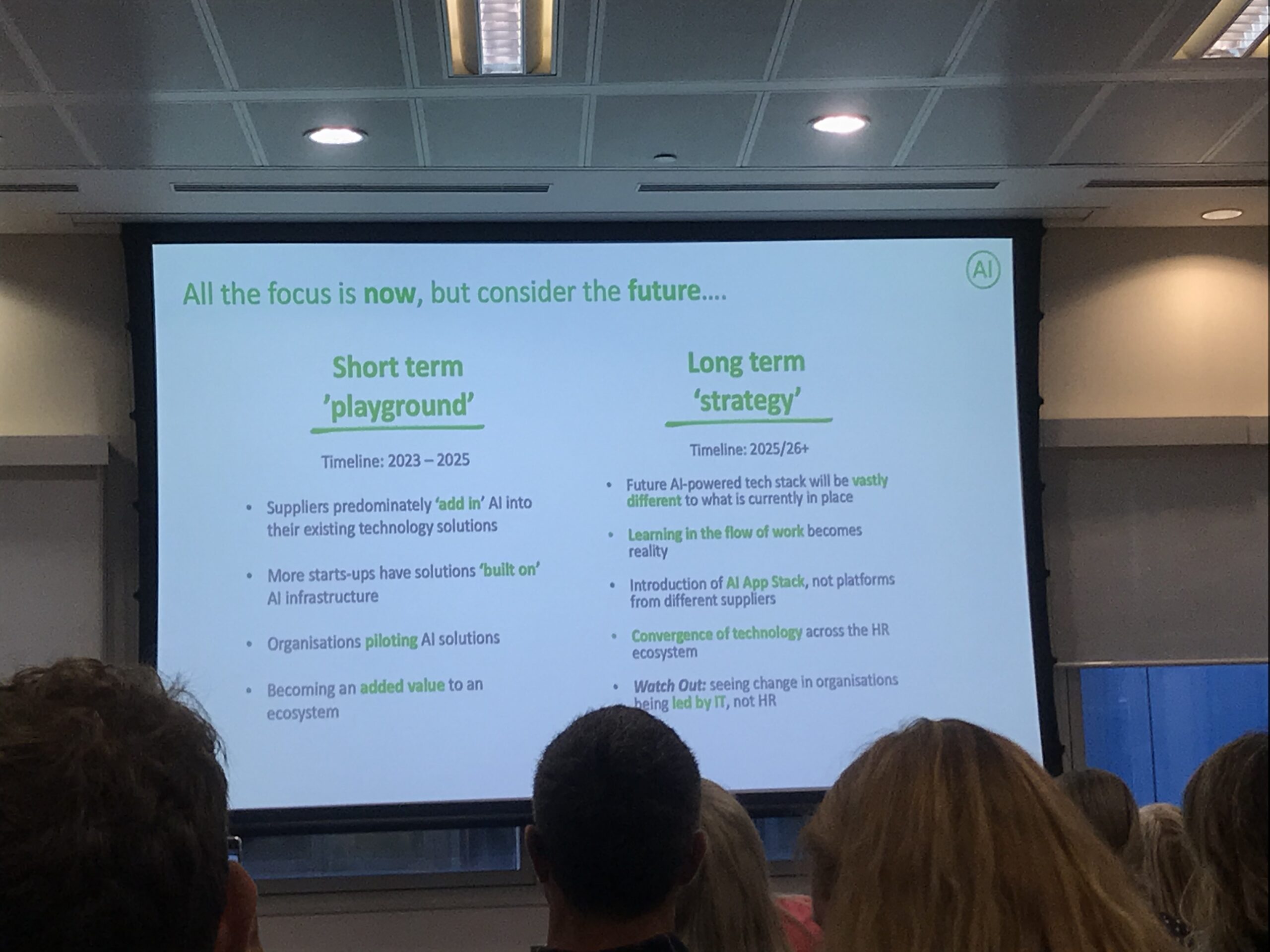
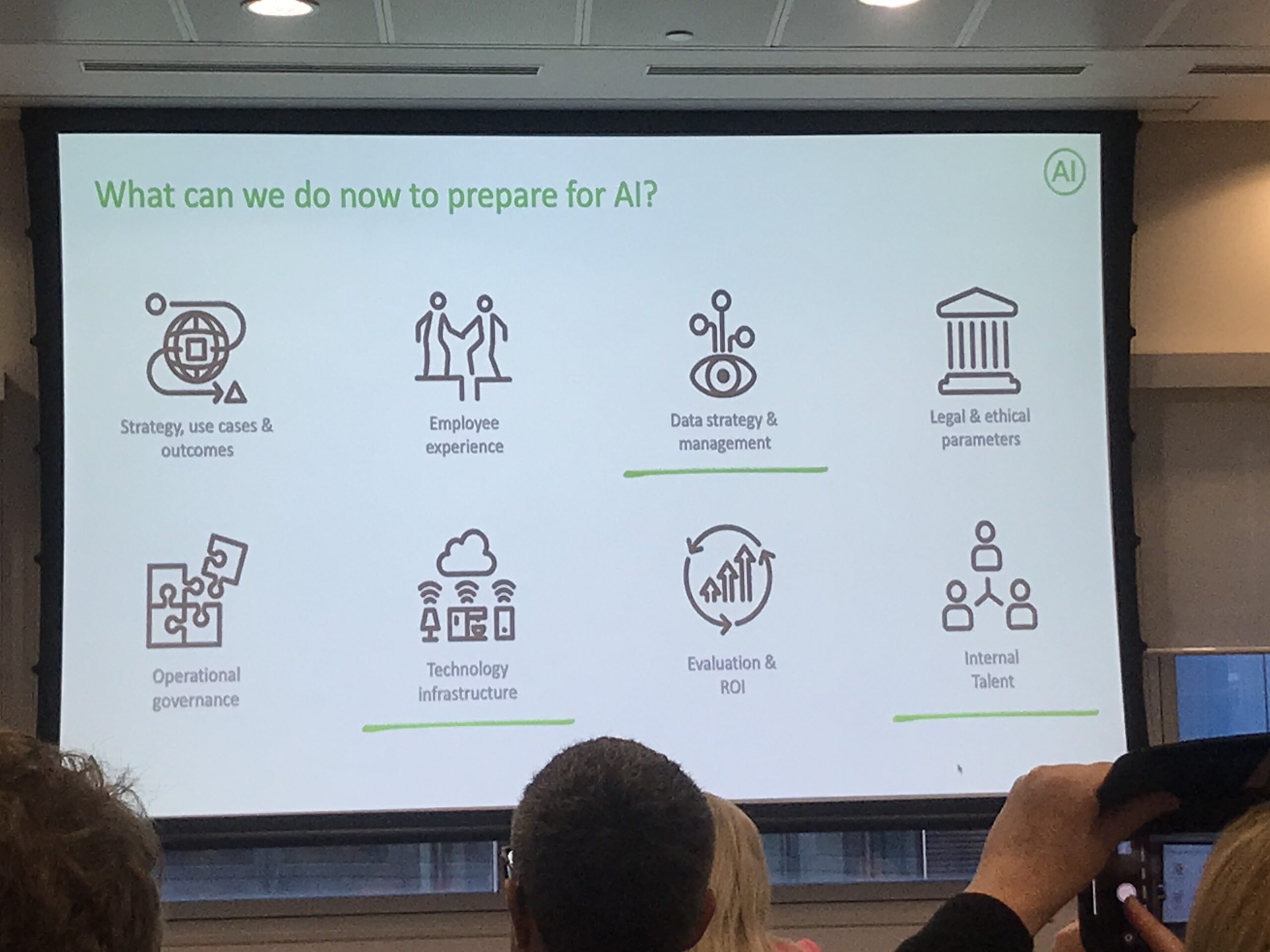
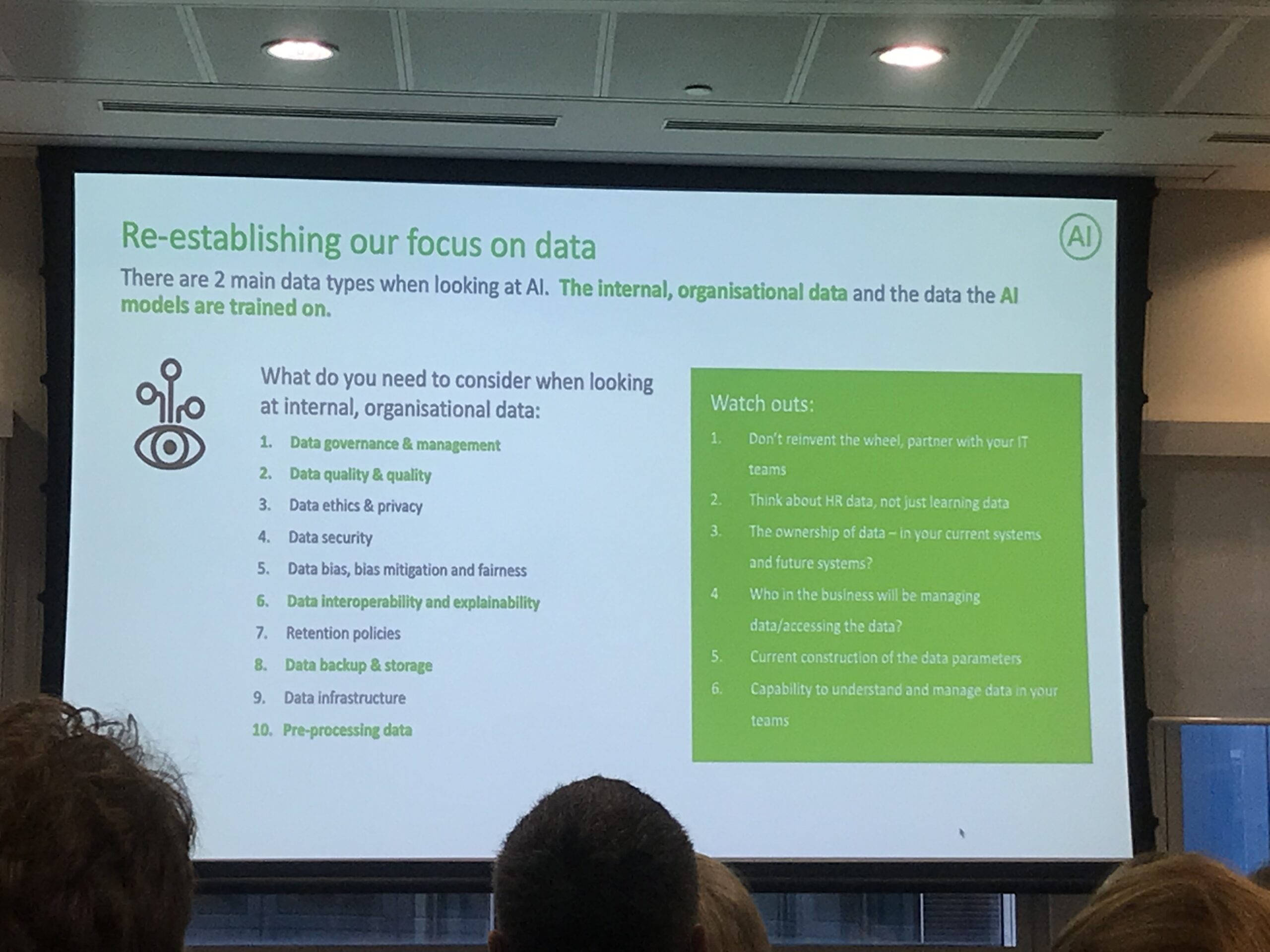
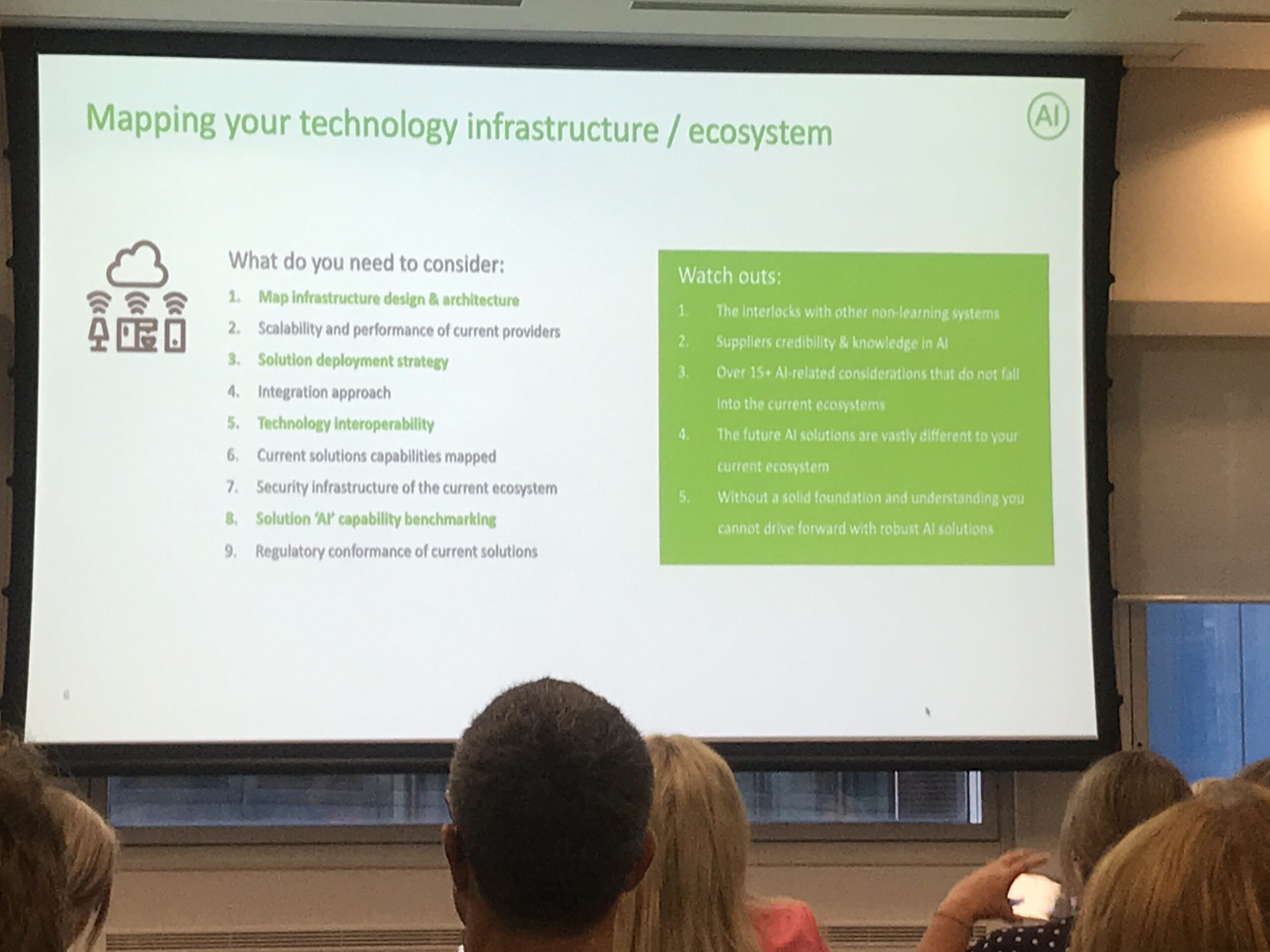
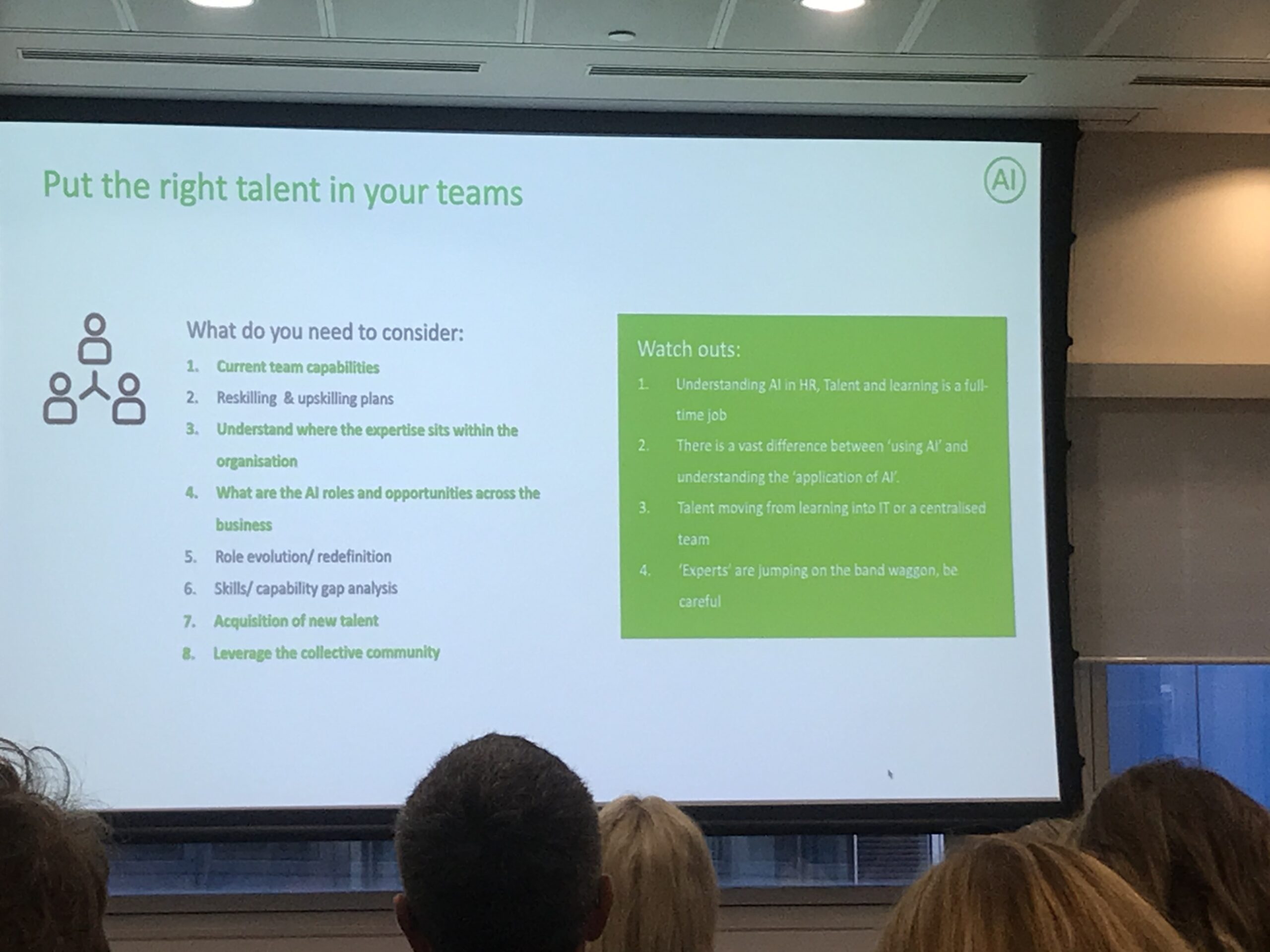
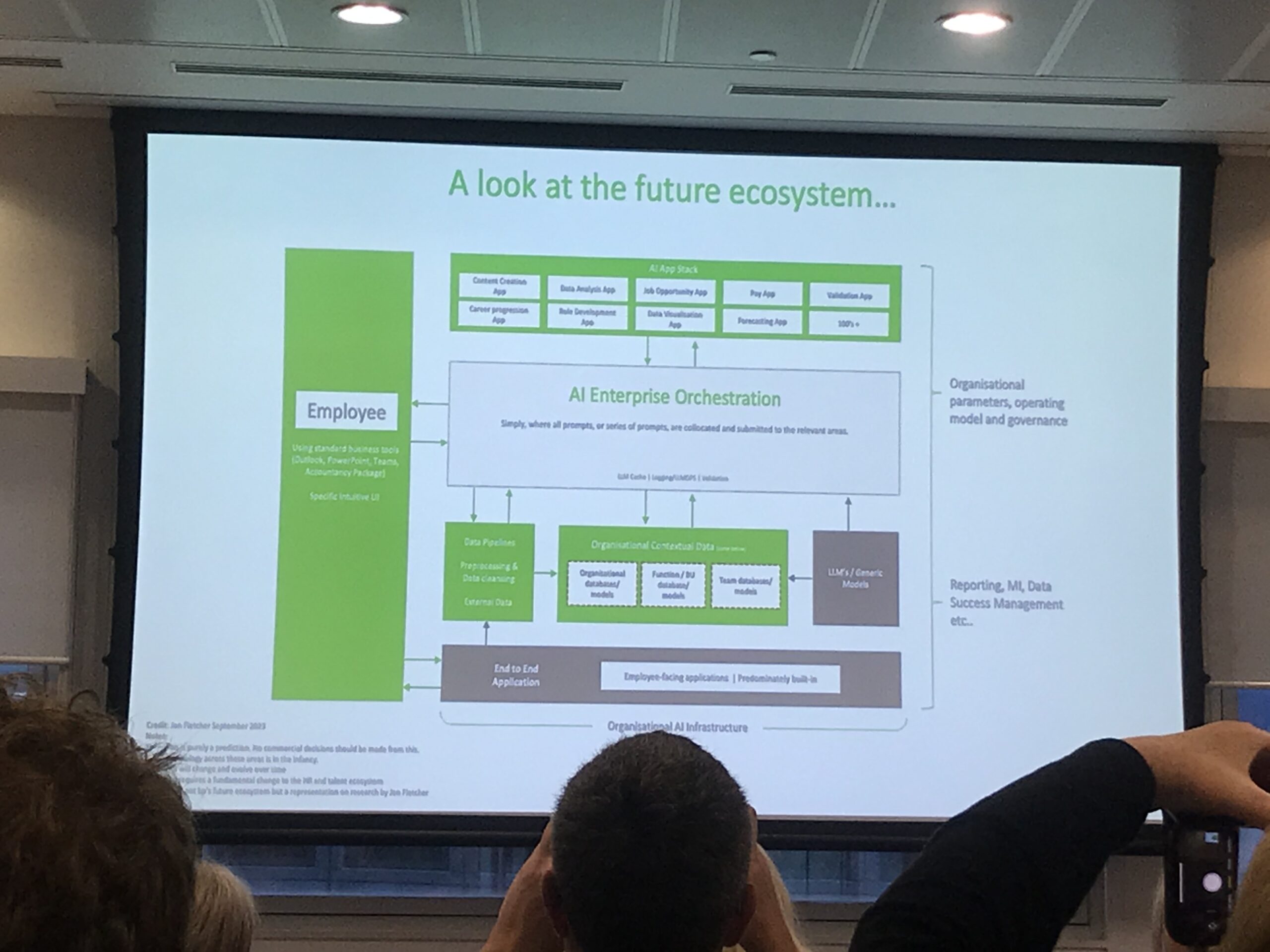
As a learning leader do you spend two to three hours a week with your IT teams understanding what they are thinking about artificial intelligence (AI)? If not, then you should be says Jon Fletcher, global head of technologies at BP. He says IT is leading change in many organisations, not HR or L&D, and learning needs to do something about that.
The word from Learning Live was that Fletcher’s talk on AI was one of the most popular ever given at the event. I was fortunate to be there and it felt like a breath of fresh air. Here was a practitioner who has set out to educate himself – and experience – AI and to immerse himself in its application. He provided an independent, informed, practitioner view of an emerging technology – not something you often see at a corporate learning conference.
There was a lot of buzz around AI generally, but the event also discussed other big challenges facing L&D, including building a learning culture, learning in hybrid organisations and health and wellbeing.
The two keynotes broadly talked about health and wellbeing, with psychologist Dr Julie Shaw talking specifically about how organisations can better support employees so that they are happier and healthier at work. Former Manchester United and England footballer also touched on this topic through his personal experience as a professional footballer. He put his success (and he was a very successful player at Manchester United) down to his work ethic and the working culture at Manchester United under Sir Alex Ferguson. Clearly, playing at the highest level of football is stressful and it is also known that Sir Alex was very controlling. Neville did say that he considered this to be an outdated style of leadership and that he had some counselling in his 20s but he didn’t reveal what the counselling was for.
Interestingly, for someone who has such a strong work ethic, Neville, who is now a successful entrepreneur, has a progressive approach to how employees should be treated in his own organisations. He says it is important to balance a good work ethic with being happy. In his organisations that means providing flexible ways of working and plenty of holiday time, as well as enabling people to take the time they need when a crisis arises outside of work.
Although he spent a lot of time in his talk discussing the role of his family in shaping his work ethic and supporting his career, he didn’t once mentioned his brother who was equally successful at Manchester United (they played alongside each other for years). I would have liked to hear more about him and their relationship.
Now, let’s look at a few of the sessions that I attended and what stood out for me:
Dr Julie Smith, clinical psychologist and author of Why has nobody told me this before?
- Organisations are still coping with the fallout from Covid (contamination anxiety for example), so employers need to ensure they are managing that.
- Mental health is far less visible than physical health. One problem with this is that organisations do not make the same kind of adjustments for employees with mental health challenges. This is an area where employers need to improve.
- As part of that, organisations need to shift their mindset around health and wellbeing from judgement to curiosity. Listen to the needs of employees and give them agency in the decision-making process when finding solutions.
- Managers do not need to be therapists – they just need to care for their team members and know how they can help, including signposting people to the right service. But ensure you support managers too.
The reality of the AI Revolution – What learning leaders need to consider, Jon Fletcher, global head of technologies, BP
Fletcher shared a lot of information in his talk. The good news is that he shares a lot of resources on LinkedIn too, so seek him there. As I mentioned earlier, Fletcher warned that IT is now leading the conversation around AI and business transformation. But don’t panic if you are in L&D and HR, as there is still time to build your influence and be heard. Luckily, Fletcher shared some of the areas that L&D needs to pay attention to now in order to start influencing the organisational AI agenda. See the top f the article for some images of the slides.
In terms of timelines for AI impact, Fletcher says that from now to 2025 is the short-term playground period in which suppliers add on or add in AI functionality and organisations start to pilot AI functionality. He sees the period beyond 2025 as the long-term strategy period in which new technology stacks will embrace AI, technologies will converge across the HR ecosystem and AI will be applied across multiple business processes.
Some other considerations for the here and now:
- What does the operational governance for AI look like in your organisation? How will it be introduced into the organisation and how will it be governed? Time for L&D to find out . . .
- Understand data management – how much is there, where is it stored and who has access to it? Security, ethics, bias, interoperability and explainability of the data need to be understood. L&D needs to be able to explain how the AI came to a final data point. And start work on pre-processing data to ensure it can work with algorithms.
- L&D needs to partner with IT on data and think HR data, not just learning data.
- Be clear who will manage the data and have access to it.
- Get access to data science skills – the L&D team will need them.
- Understand how your IT architecture works – AI uses APIs so you’ll need to understand how data is transferred through the system.
- There isn’t currently any AI capability benchmarking, which means no consistency across suppliers. Go with your gut reaction!
- Beware of suppliers’ knowledge and credibility.
- Consider your team’s AI capabilities and how you will develop the skills you need. And understand where the AI expertise sits within the business.
- Finally, Fletcher shared his vision of the future business tech ecosystem (see image below). Note, this is not a platform ecosystem, but one built on data and APIs.
Adam Lancaster, former director of leadership development at Meta
For many learning professionals, learning in the flow of work means taking learning to employees – putting elearning on tablets in shops, for example. The only problem with this approach, says Adam Lancaster, former director of leadership development at Meta, is that it doesn’t solve employees’ biggest challenge – being time poor. Employees are still being taken out of the flow of work, even if the learning is on a tablet in a shop.
This reflects L&D’s challenge. Most learning happens on the job, but L&D spends the least amount of time working on this, says Lancaster. “We spend most of our time on formal learning but have too many smart people solving the wrong problems. We ask the team to solve the problems we created – for example, we create the content and then we spend our time trying to market it to learners,” he says. “We need to focus on the business problem and make sure we solve the right problems.”
At Meta, Lancaster helped overcome this problem of focusing on solving the problems created by L&D by ensuring the team responsible for leadership development could answer the following questions:
- What is my company’s key business challenge?
- What are the performance challenges related to that?
- Where and when do they happen?
TikTok had stolen a march on Meta and the company needed to respond. To do so, it had to improve its leadership around product management and teams needed to be clearer on their goals and how their work would help Meta compete with Tik Tok.
Meta developed what it calls a ‘moments strategy’ to tackle performance improvement in the flow of work. It defined three moments:
Micro – the daily moments around how people show up at work, how they are in meetings etc.
Current – current performance related challenges or external events that are impacting on work.
Defining – something significant that defines your career.
The team then set to work understanding how to improve these moments for leaders. It did this by sitting in on meetings to understand how they could be improved, how they could help leaders better plan their work and how leaders could better support their teams.
The team made incremental changes to how leaders went about their work – for example, providing meeting templates and weekly planners as well as coaching them on how to better manage teams. These small changes had a significant impact as measured by business metrics – daily users, advertising revenue, share price etc. The team also picked up anecdotal evidence to make sure the changes were having the desired effect.
Lancaster says it is hard to resist the urge to build programmes, but well worth it: “It can be scary to say we won’t build programmes, but you need to get out of your own way, push away the fear and then you start to have impact.”
In some sessions the speakers were challenged on how their approach could be applied to smaller, less well funded businesses. The answer? Try and work with the bits that you think might be useful – there will be elements in the approach of a large tech company that will work in a smaller company. And in the case of AI, stay abreast of how the larger organisations are using AI in learning.
Ironically, while Lancaster was suggesting that creating content and then spending time marketing it was not a good use of L&D’s time, there was a conference session running concurrently looking at how L&D can market learning more effectively.

